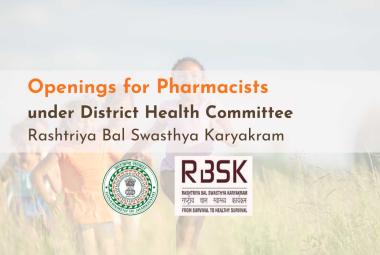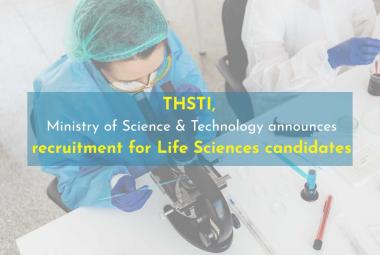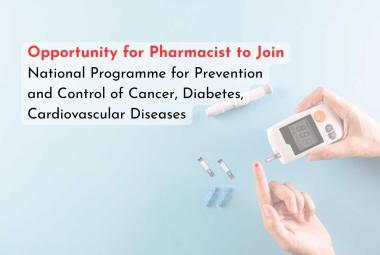




AUG 2014 ARTICLE LIST >>
PharmaTutor (August- 2014)
ISSN: 2347 - 7881
(Volume 2, Issue 8)
Received On: 11/05/2014; Accepted On: 26/05/2014; Published On: 01/08/2014
AUTHORS: Mistry Ripal*, Haresh T. Mulani
Department of Pharmaceutics
Indubhai Patel College of Pharmacy and Research Centre,
Dharmaj, Gujarat, India
*rx.ripalmistry@gmail.com
ABSTRACT:
Diabetes mellitus, or simply diabetes, is a chronic disease that occurs when the pancreas is no longer able to make insulin, or when the body cannot make good use of the insulin it produces. The chronic hyperglycemia of diabetes is associated with long-term damage, dysfunction, and failure of different organs, especially the eyes, kidneys, nerves, heart, and blood vessels. The success of oral hypoglycemic drug therapy is usually based on are storation of normal blood glucose levels. Traditionally, the term oral hypoglycemic was used interchangeably with sulfonylureas, but more recently the development of several new drugs has broadened this designation to include all oral medications for diabetes. Nateglinide, a D-phenylalanine derivative, is a novel insulinotropic drug which has recently been launched as a therapeutic agent for Type II diabetes. Clinical studies have shown that nateglinide induces a rapid onset of insulin release synergistic with meal administration which effectively restores the early phase of insulin secretion. Since the loss of early insulin secretion is thought to play an important role in the development of glucose in tolerance the ability of nateglinide to promote early insulin release is potentially of considerable therapeutic benefit.
How to cite this article: R Mistry, HT Mulani; A Review of Nateglinide in the Management of Type 2 Diabetes; PharmaTutor; 2014; 2(8); 8-15
[ABSTRACT WITH CITATION] [VIEW AS HTML]

REFERENCES:
1.Sheehan MT, “Current Therapeutic Option in Type 2 Diabrtes Mellitus : A Pratical Approach.” Clinical Medicine. 2003,189-200.
2.Diabetes Atlas: idf.org/diabetes atlas/5e/south-east-asia.
3.American Diabetes Association,“Diagnosis and Classification of Diabetes Mellitus.”. Diabetes Care. Jan 2013. Volume 36(1).
4.D. Dodda, “Plants Used in the Management of Diabetic Complications”,Indian Journal of Pharmaceutical Sciences.March - April 2014.Volume 76(2), 97-106.
5.Ferrannini E. “Insulin resistance versus insulin deficiency in non-insulin-dependent
6.diabetes mellitus: problems and prospects”. Endocr Rev. Aug 1998, Volume 19 (4): 477-90.
7.Brahmankar DM, Jaiswal SB. Bio pharmaceutics and pharmacokinetics a treatise. 1st ed. New Delhi: Vallabh Prakashan; 1995.
8.Lippin cott, “Insulin and Oral Drugs for Diabetes Mellitus”. 5th edition,Chapter 67, Page no 763.
9.Nicholas Tentolouris ,Christina Voulgari, Nicholas Katsilambros, “A review of nateglinide in the management of patients with type 2 diabetes, Vascular Health and Risk Management, volume 3(6), 2007,797–807.
10.Christopher I. Carswell, Christine R. Culy, “Management of Type 2 Diabetes Mellitus Defining the Role of Nateglinide”, Dis Manage Health Outcomes, volume 10 (6), 2002, 363-383.
11.Atsuko Okamura, “Transport and uptake of nateglinide in Caco-2 cells and its inhibitory effect on human monocarboxylate transporter MCT1”, British Journal of Pharmacology, 2002, 391 -399.
12.Andre J. Scheen, “Drug-Drug and Food-Drug Pharmacokinetic Interactions with New Insulinotropic Agents Repaglinide and Nateglinide” Clin Pharmacokinet. 2007, Volume 46 (2), 93-108.
13.Honghui Zhou, “Nateglinide, a New Mealtime Glucose Regulator.” Pharmacokinetics : Clin Drug Invest. 2000, Volume 2, 465-471.
14.Chisato Makino, “Effect of Decrease in Both Postprandial Blood Glucose (PBG) and Fasting Blood Glucose (FBG) Levels in Normal Beagle Dogs with Nateglinide Enteric Coated Granules and Immediate Release Tablets.” Chem. Pharm. Bull. 2006, Volume 54(4), 409—414.
15.Vlckova V, “Hypoglycaemia with Oral Antidiabetic Drugs.” Drug Safety. 2009, Volume 32(5), 409-419.
16.Yoji Hazama, “Beneficial effects of nateglinide on insulinresistance in type 2 diabetes”, Diabetes Research and Clinical Practice. 2006, Volume 71, 251–255.
17.Markolf Hanefeld, “Rapid and Short – Acting Mealtime Insulin Secretion With Nateglinide Controls Both Prandial and Mean Glycemia”, Diabetes Care. 2000, Volume 23, 202–207.
18.P.M. Bell, “Additive hypoglycaemic effect of nateglinide and exogenous glucagon-like peptide-1 in type 2 diabetes.” Diabetes Research and Clinical Practice. 2011, Volume 91, e68-e70.
19. drugs.com/mmx/nateglinide.com.
20. chemspider.com/Chemical-Structure.10482084.com
21. drugbank.ca/drugs/DB00731.
22.Terri L Levien, “Nateglinide Therapy for Type 2 Diabetes Mellitus”, Ann Pharmacother, 2001, Volume 35,1426-34.













